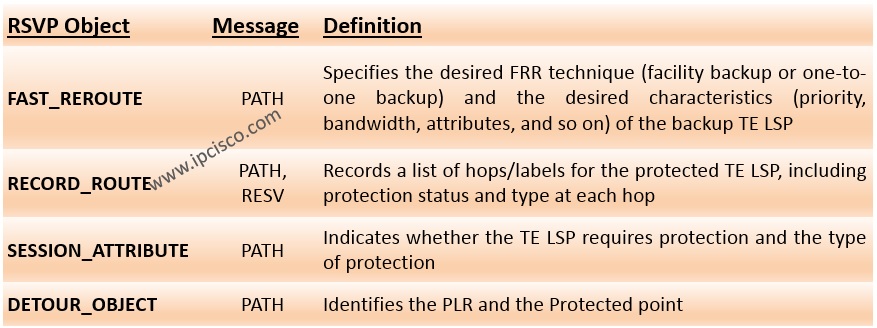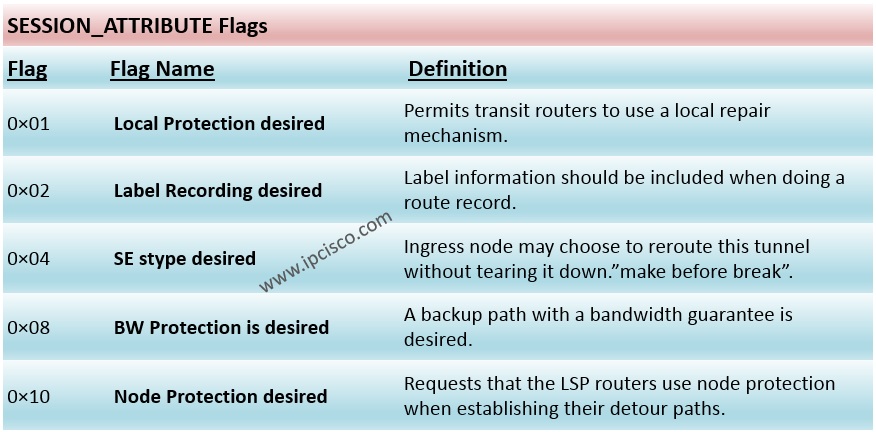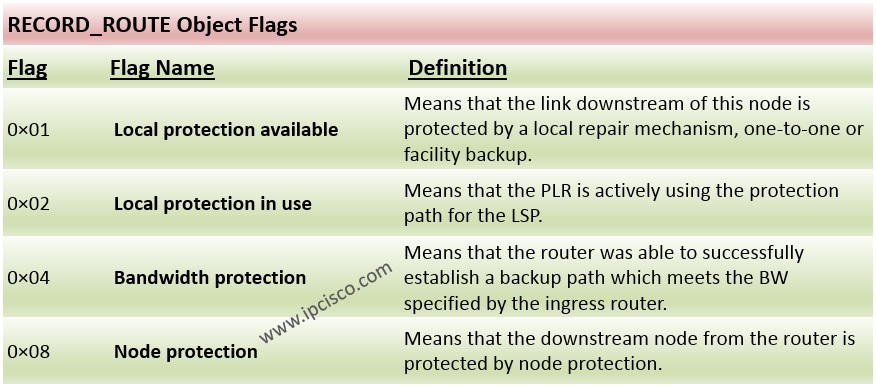- COURSES
- SPECIALS
- BLOG
- MEMBERS
- SHOP
- ABOUT
- ENROLL HERE

There some RSVP Objects used in Fast Reroute(FRR). Beside this, RSVP-TE extend for this purposes. There are also some extensions on RSVP-TE for automatic signalling in protection tunnels. So some additional objects and flags are coming for FRR. These two additional objects are FAST_REROUTE and DETOUR which is the extention of RSVP-TE for fast-reroute signaling. The SESSION_ATTRIBUTE and RECORD_ROUTE objects are also extended with additional flags to support bandwidth and node protection features.

You can test you MPLS knowledge on Network Questions Page!
Table of Contents
FAST_REROUTE Object is used to control the backup used for the protected LSP. This includes some parameters to be used for establishing protection path like setup and hold priorities, session attribute filters, and bandwidth. It also allows a specific local protection method to be requested (0x01 for one-to-one backup and 0x02 for facility backup). This object inserted into the PATH message by the Head-End.
The DETOUR object is used in the one-to-one backup method to identify detour LSPs.After the routers along the Path assign resources to the LSP, each generates a Path message for the detour path and includes the Detour Object.
PLR_ID : IPv4 address of the PLR that is the beginning point of the detour.
Avoid_Node_ID : IPv4 address of the first downstream node that the PLR is trying to avoid.
Informs each router in the path about the characteristic of the LSP.

Allows each router in the path to determine the availability or use of a protection path. To report whether bandwidth and/or node protection are provided, two new flags are defined in the RRO IPv4 sub-object.

Record Route Object (RRO) is included, by default, in RSVP PATH and RESV messages. Each router along the LSP updates Record Route Object(RRO). Record Route Object(RRO) is used to track the exact path that an LSP-Path takes. Here, the interface IPs are used.
In the context of FRR, routers make special use of the Record Route Object(RRO) inside the RESV message. Labels are also recorded in the RRO of the RESV message.
RRO in PATH message: Each router adds its own ip address connecting to the downstream router.
RRO in RESV message: Each router adds its own ip address connecting to the upstream router and the label allocated for the LSP.
One of the reason for usaging RRO, telling the protection to the Head-End. After successfully establishing the protection tunnel, PLR sends a RESV message with “local-protection-available” flag set. If node protection,it sets node-protection flag to 1. If it is link protection, then remains 0.
Think about the protecting (backup) LSP containning R1,R2,R3 and R4. R1 is the Head-End and the R4 is the Tail-End. In R2 (PLR), RSVP Record Route Object (RRO) includes “local-protection-available” and “node-protection” flags set. In R3, only “local-protection-available” flag is set. Because at the last hop, there is no node protection. It is link protection.
The result of the CSPF calculation is included in the Explicit Route Object(ERO) of the path message. RSVP ERO filed contains the hops calculated by PLR for the detour.
An explicit route is a particular path in the network topology.It is determined by a node, with the intent of directing traffic along that path.An explicit route is described as a list of groups of nodes along the explicit route.
Leave a Reply